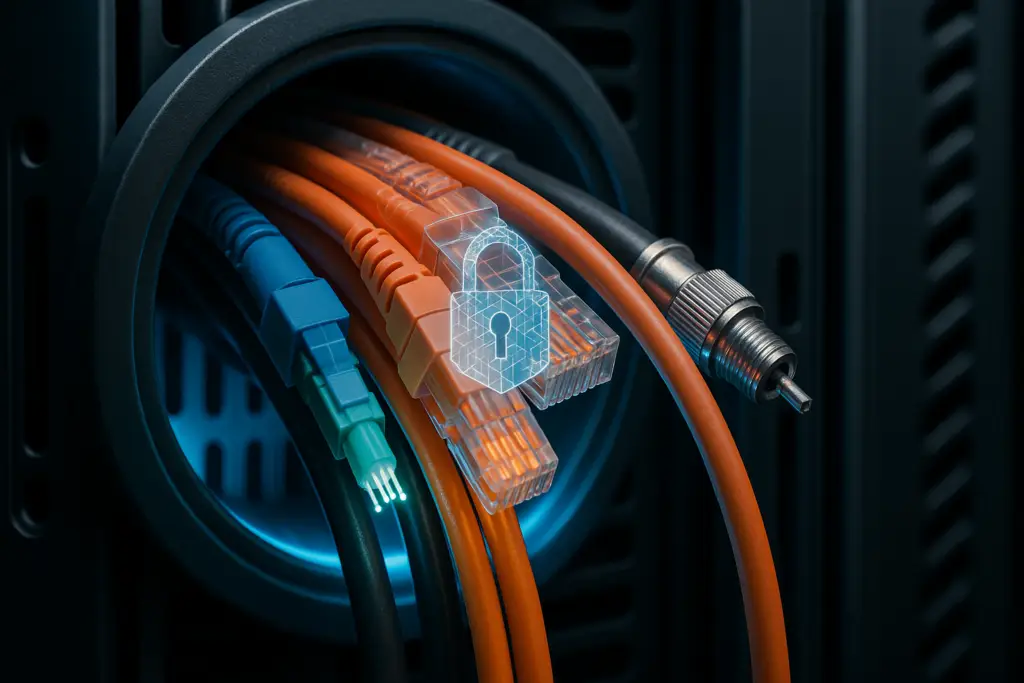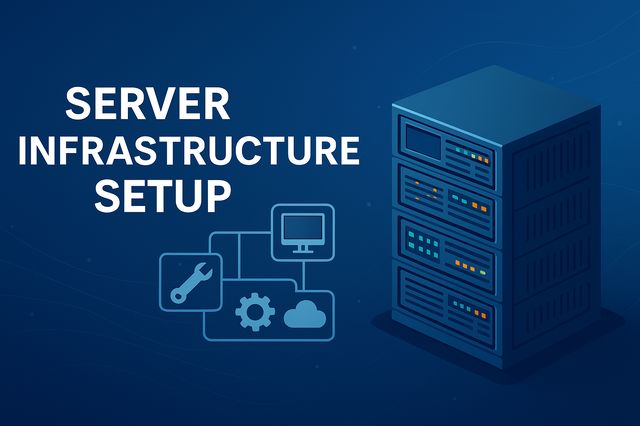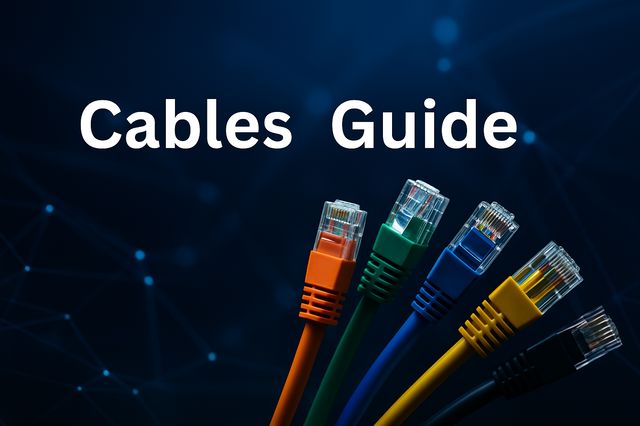Network cable standards in 2025 define the backbone of modern business connectivity ensuring faster data transmission, stronger cybersecurity, and future-ready scalability. Upgrading from CAT5e to CAT6a or CAT8 delivers not only speed but also improved shielding, stability, and resilience against electromagnetic interference, supporting Zero Trust, PoE++, and AI-driven workloads across SMB networks.
The Backbone of Every Secure Network
Behind every reliable business network lies a simple but critical component: the cable.
While wireless gets the headlines, structured cabling remains the invisible infrastructure that keeps data secure, fast, and available.The latest network cable standards for 2025 show how even a small upgrade from CAT5e to CAT6a or CAT8 can reshape an organization’s entire IT performance and cybersecurity posture.A single weak cable can cause signal interference, packet loss, or power instability that impacts everything from VoIP calls to intrusion detection systems.
That’s why understanding Ethernet cabling standards isn’t just an IT concern it’s a strategic business decision for every SMB planning its future infrastructure.
Understanding Ethernet Cable Categories
Ethernet cables are classified into “Categories,” or CATs, that define their transmission speed, bandwidth, and shielding.
Each new generation builds on the previous one improving performance and resistance to interference.

CAT5e – The Legacy Standard
Originally designed for 100 Mbps networks and later improved for 1 Gbps, CAT5e is still common in older offices.
It’s unshielded (UTP), low-cost, and reliable for basic connectivity.
But in 2025, it’s considered end-of-life for serious business environments.
CAT6 – The SMB Workhorse
CAT6 supports up to 10 Gbps over short distances (up to 55 meters) and remains the sweet spot for most SMBs.
It provides tighter twists and improved isolation between pairs, reducing crosstalk and improving latency.
CAT6a – Enhanced for Enterprise Loads
CAT6a extends 10 Gbps capability to the full 100 meters and supports frequencies up to 500 MHz.
It’s also shielded, making it ideal for modern offices with dense Wi-Fi access points, IoT devices, or industrial noise sources.
CAT7 – Shielded for High-Interference Environments
CAT7 and CAT7a increase bandwidth to 600–1000 MHz and are individually shielded (S/FTP).
They’re used in financial institutions, data centers, and industrial facilities that demand maximum reliability though not officially recognized by TIA/EIA.
CAT8 – The Data Center Standard
The latest official standard (TIA-568C.2-1), CAT8 delivers up to 40 Gbps over 30 meters.
It uses heavy shielding to eliminate EMI and supports emerging technologies like PoE++, edge computing, and AI workloads.
While overkill for most SMB offices today, CAT8 cabling ensures future-proofing for at least a decade.
Cabling, Cybersecurity, and Business Reliability
Network cables aren’t just conduits for data they’re security assets.
The physical layer of your network can directly impact uptime, resilience, and exposure to risk.

Poorly installed or outdated cables lead to –
Packet loss that disrupts data integrity
Signal interference that slows IDS and monitoring tools
Power instability that damages PoE devices
Unshielded paths that can leak electromagnetic signals (TEMPEST risk)
When SMBs invest in modern structured cabling, they’re not just improving performance they’re closing physical vulnerabilities.
As Heimdal Security and Imperva both emphasize, the network’s “plumbing” must be as secure as its firewalls.
A well-designed cabling layout supports –
VLAN-based segmentation for Zero Trust
Real-time log visibility for NDR and SOC tool
PoE security cameras and IoT without overload
Consistent encryption throughput for endpoints
In short: strong cabling equals strong cybersecurity.
Shielding Types | UTP, FTP, and S/FTP
Shielding determines how a cable resists interference.
It’s the difference between smooth performance and constant network noise.
UTP (Unshielded Twisted Pair): Standard office cable simple and inexpensive, but vulnerable to EMI in crowded environments.
FTP (Foiled Twisted Pair): Adds an overall foil shield, protecting against moderate electromagnetic noise.
S/FTP (Shielded Foiled Twisted Pair): Every pair is individually shielded ideal for high-density offices, manufacturing, or medical labs.
In 2025, most SMBs are upgrading from UTP to FTP or S/FTP to support higher bandwidths and minimize interference from smart devices, printers, and IoT systems.
It’s no longer just about speed it’s about signal integrity and data security.
How to Choose the Right Cable for Your Business

Assess Distance Requirements
If runs are under 55m, CAT6 may suffice; for 100m or industrial noise, use CAT6a or higher.
Evaluate Data and Power Loads
Modern offices rely on PoE devices access points, IP cameras, phones.
Choose cables rated for PoE+ or PoE++, to prevent voltage drop or overheating.
Plan for Growth
If your company expects to expand or move to hybrid cloud systems, skip CAT6 entirely and install CAT6a or CAT8 now the cost difference today is minimal compared to rewiring later.
Certification and Testing
Always request Fluke certification after installation.
A certified cable run guarantees compliance with TIA/EIA 568 and ISO/IEC 11801 standards and preserves warranty coverage.
Common Mistakes SMBs Make During Upgrades
Even companies investing in premium cabling often make avoidable mistakes that degrade performance or increase downtime.
Mixing cable categories — using CAT5e patch cords on CAT6a infrastructure limits speed and introduces noise.
Poor termination — untrained installers cause signal reflection and latency.
Ignoring shielding continuity — breaks in foil ground nullify EMI protection.
No documentation — IT teams can’t troubleshoot unlabeled cables.
Skipping certification tests — leads to intermittent faults that appear months later.
Avoiding these issues can save up to 40% in future maintenance and downtime costs, according to Telco-Data network audits.
The Future | CAT8, PoE++, and 40G SMB Networks
The network landscape is changing rapidly.
Where CAT6 was once the standard, CAT8 is now the benchmark for next-generation offices.
Emerging trends shaping the 2025–2030 market:
AI workloads demand higher throughput at the edge.
Smart buildings use PoE++ for lighting, security, and sensors.
Hybrid fiber-Ethernet backbones enable 25–40 Gbps across campuses.
5G and Wi-Fi 7 increase the need for strong wired backhaul.
Even if an SMB doesn’t yet need 40 Gbps, planning cabling around CAT8 ensures ten years of compatibility no rip-and-replace cycles, lower TCO, and consistent compliance with evolving security frameworks.
Why It Matters | The Real Value of Structured Cabling
A network is only as strong as its weakest link and in most businesses, that link is physical.
Investing in modern cabling standards delivers:
Stability for mission-critical applications
Scalability for digital transformation
Security through shielding and segmentation
Savings through reduced maintenance and downtimeIt’s not just a technical upgrade it’s a foundation for Zero Trust networking, IoT expansion, and sustainable cybersecurity growth.
That’s why 2025 marks the shift from “buying cables” to designing infrastructures.

The key categories are CAT5e, CAT6, CAT6a, CAT7, and CAT8.
While CAT5e supports up to 1 Gbps, CAT6a enables 10 Gbps across 100 meters, and CAT8 offers up to 40 Gbps ideal for data centers and AI-driven environments.
Older cables like CAT5e limit performance and increase interference.
Upgrading to CAT6a or CAT8 improves speed, reliability, and shielding ensuring consistent uptime and better cybersecurity resilience for hybrid and cloud infrastructures.
Physical cabling affects both signal integrity and data protection.
Unshielded or poorly terminated cables can cause packet loss, EMI leakage, and network instability directly impacting IDS, SOC monitoring, and Zero Trust segmentation.
UTP (Unshielded Twisted Pair): Basic, cost-effective, but prone to EMI.
FTP (Foiled Twisted Pair): Adds overall foil protection.
S/FTP (Shielded Foiled Twisted Pair): Highest-grade shielding for high-density or industrial setups.
In 2025, SMBs increasingly adopt FTP or S/FTP for improved stability and data security.
Mixing cable types (e.g., CAT5e patch cords with CAT6a infrastructure).
Poor termination and grounding practices.
Skipping certification tests (Fluke).
Lacking proper labeling and documentation.
These mistakes can reduce performance and cause intermittent network failures.
Future cabling will focus on CAT8, PoE++, and hybrid fiber-Ethernet backbones supporting up to 40 Gbps.
Emerging drivers include AI workloads, 5G, Wi-Fi 7, and smart building automation, pushing structured cabling from a cost center to a cybersecurity enabler.
References
How Do You Choose Between CAT 6, CAT 7 and CAT 8 Cables? – biztechmagazine
Cat 7 vs. Cat 8: Choosing The Right Ethernet Cable – cablematters
cat7-vs-cat8 whats the difference – nmcabling


